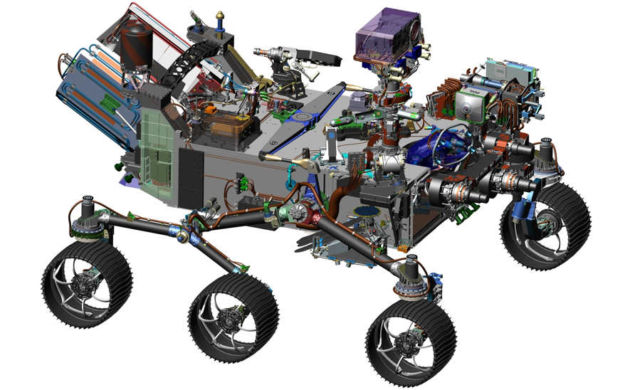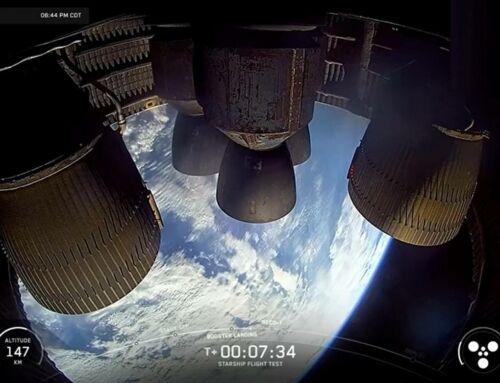NASA is ready to proceed with final design and construction of its next Mars rover.
The Mars 2020 rover, targeted to launch in summer of 2020, will arrive on the Red Planet in February 2021.
It will investigate a region of Mars, where the ancient environment may have been favorable for microbial life.
Above, this 2016 image comes from computer-assisted-design work on NASA’s 2020 Mars rover. The design leverages many successful features of NASA’s Curiosity rover, which landed on Mars in 2012, but it adds new science instruments and a sampling system to carry out the new goals for the 2020 mission.
Throughout its investigation, it will collect samples of soil and rock, and cache them on the surface for potential return to Earth by a future mission.
Geoffrey Yoder, acting associate administrator of NASA’s Science Mission Directorate in Washington, said:
“The Mars 2020 rover is the first step in a potential multi-mission campaign to return carefully selected and sealed samples of Martian rocks and soil to Earth. This mission marks a significant milestone in NASA’s Journey to Mars — to determine whether life has ever existed on Mars, and to advance our goal of sending humans to the Red Planet.”
To reduce risk and provide cost savings, the 2020 rover will look much like its six-wheeled, one-ton predecessor, Curiosity. But with an array of new science instruments and enhancements to explore Mars as never before. For example, the rover will conduct the first investigation into the usability and availability of Martian resources, including oxygen, in preparation for human missions.
Mars 2020 will carry an entirely new subsystem to collect and prepare Martian rocks and soil samples that includes a coring drill on its arm and a rack of sample tubes.
About 30 of these sample tubes will be deposited at select locations for return on a potential future sample-retrieval mission. In laboratories on Earth, specimens from Mars could be analyzed for evidence of past life on Mars and possible health hazards for future human missions.
source NASA






Leave A Comment